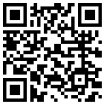
在某些类似Unix的操作系统上,ifup会激活网络接口,使其可用于传输和接收数据。
查看英文版
1 ifup 运行系统环境
2 ifup 语法
3 ifup 例子
Unix&Linux
ifup [-nv] [--no-act] [--verbose] [-i FILE|--interfaces=FILE]
[--allow CLASS] -a|IFACE...
ifup -h|--help
ifup -V|--version
ifdown [-nv] [--no-act] [--verbose] [-i FILE|--interfaces=FILE]
[--allow CLASS] -a|IFACE...
ifquery [-nv] [--no-act] [--verbose] [-i FILE|--interfaces=FILE]
[--allow CLASS] -a|IFACE...
ifquery -l|--list [-nv] [--no-act] [--verbose] [-i FILE|--interfaces=FILE]
[--allow CLASS] -a|IFACE...
技术说明
所述的ifup和ifdown你命令可以被用于配置网络接口基于所述文件的接口定义的/ etc /network/interfaces。
该ifquery命令用于解析接口的配置数据。
选件
|
-a,--all |
如果提供给ifup,则影响标记为auto的所有接口。按照在/ etc / network / interfaces中定义的顺序启动接口。与--allow结合使用,将改为作用于指定类的所有接口。如果给ifdown,则影响所有定义的接口。按状态文件在状态文件中当前列出的顺序关闭接口。仅关闭/ etc / network / interfaces中定义的接口。 |
|
--force |
强制配置或取消配置接口。 |
|
-h,--help |
显示选项摘要。 |
|
--allow =CLASS |
仅允许对/ etc / network / interfaces中allow-CLASS行中列出的接口进行操作。 |
|
-i FILE,-- interfaces = FILE |
从FILE而不是/ etc / network / interfaces读取接口定义。 |
|
-X PATTERN,-- exclude =PATTERN |
从接口列表中排除要由PATTERN操作的接口。PATTERN使用通常的shell glob语法。如果不使用外壳通配符,则它必须与确切的接口名称匹配。可以多次指定此选项,从而导致排除多个模式。 |
|
-o OPTION = VALUE |
将OPTION设置为VALUE,就像在/ etc / network / interfaces中一样。 |
|
-n,--no-ACT |
不要配置任何接口或运行任何“上”或“下”命令。 |
|
--no-mappings |
不要运行任何映射。有关映射功能的更多信息,请参见接口。 |
|
--no-scripts |
不要在/etc/network/if-*.d/下运行任何脚本 |
|
-V,-- version |
显示版权和版本信息。 |
|
-v,--verbose |
在执行命令时显示命令。 |
|
-l,--list |
对于ifquery,列出与指定类匹配的所有接口。如果未指定任何类,则打印列为auto的所有接口。 |
档案
|
/ etc / network / interfaces |
网络接口的定义。 |
|
/run/network/ ifstate |
网络接口的当前状态。 |
已知局限性
该程序会记录网络接口是打开还是关闭。在特殊情况下,这些记录可能与接口的实际状态不一致。例如,使用ifup调出并随后使用ifconfig取消配置的接口仍将记录为up。要解决此问题,可以使用--force选项强制ifup或ifdown运行配置或取消配置命令,尽管它认为接口的当前状态是什么。
文件/ run / network / ifstate必须是可写的,ifup或ifdown才能正常工作。如果该位置不可写(例如,由于根 文件系统以只读方式安装,以进行系统恢复),则应将/ run / network / ifstate设为指向可写位置的符号链接。如果无法做到这一点,则可以使用--force选项运行配置或取消配置命令,而无需更新文件。
需要注意的是该程序没有自动运行:ifup的本身并不能带来了出现作为的结果界面硬件被安装和ifdown你本身并不能打倒那个消失硬件的结果中移除接口。要自动配置网络接口,您需要安装其他软件包,例如udev或ifplugd。
查看英文版
ifup -a
在/ etc / network / interfaces中调出所有用auto定义的接口
ifup eth0
调出接口eth0
ifup eth0=home
将接口eth0设为逻辑接口home
ifdown -a
断开当前所有的接口。
ifquery -l
打印用auto关键字指定的所有接口的名称。
ifquery -l --allow=hotplug
打印用allow-hotplug关键字指定的所有接口的名称。
ifquery eth0
显示在ifupdown配置中指定的接口选项。每个键值对都使用“ : ”作为分隔符打印在单独的行上。
查看英文版
未知的网友